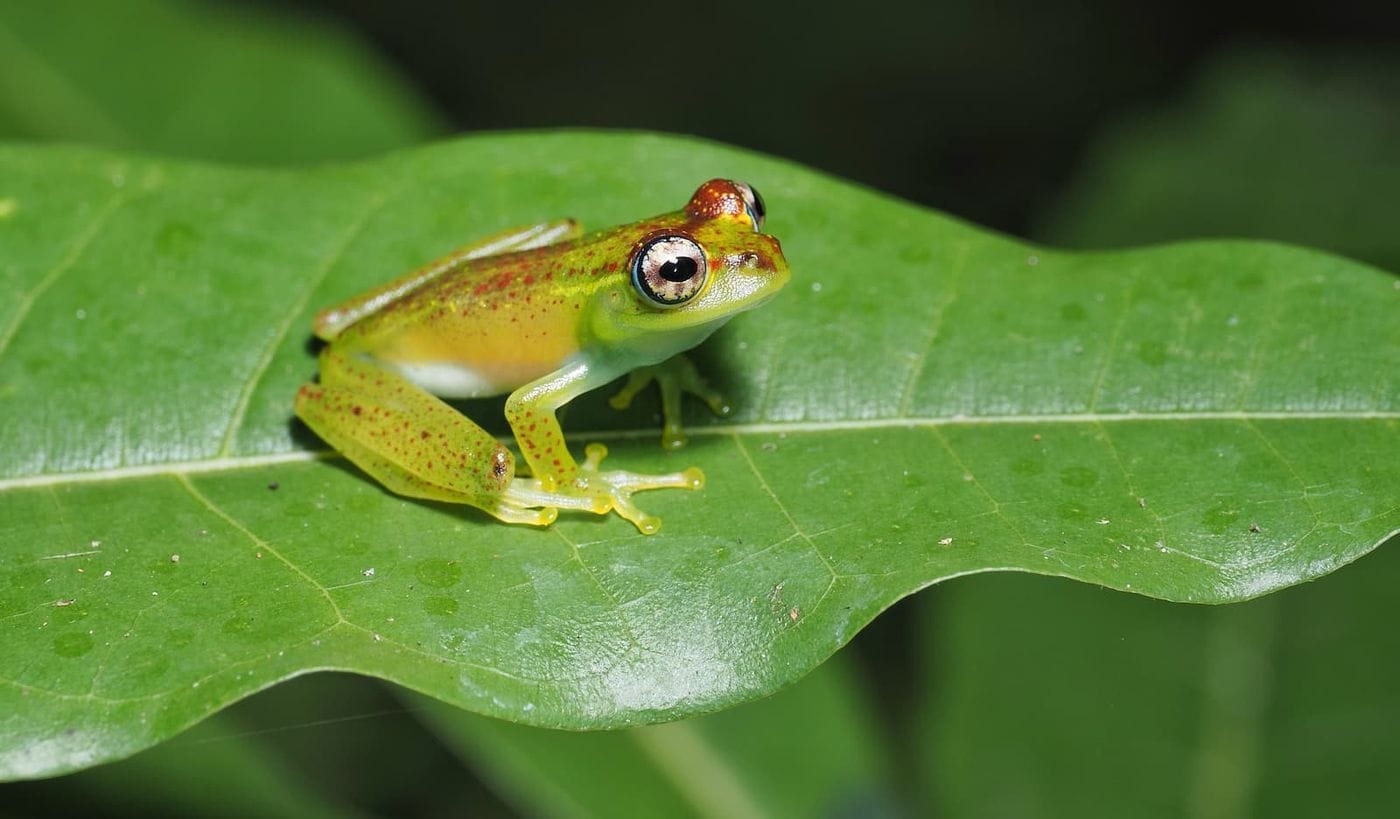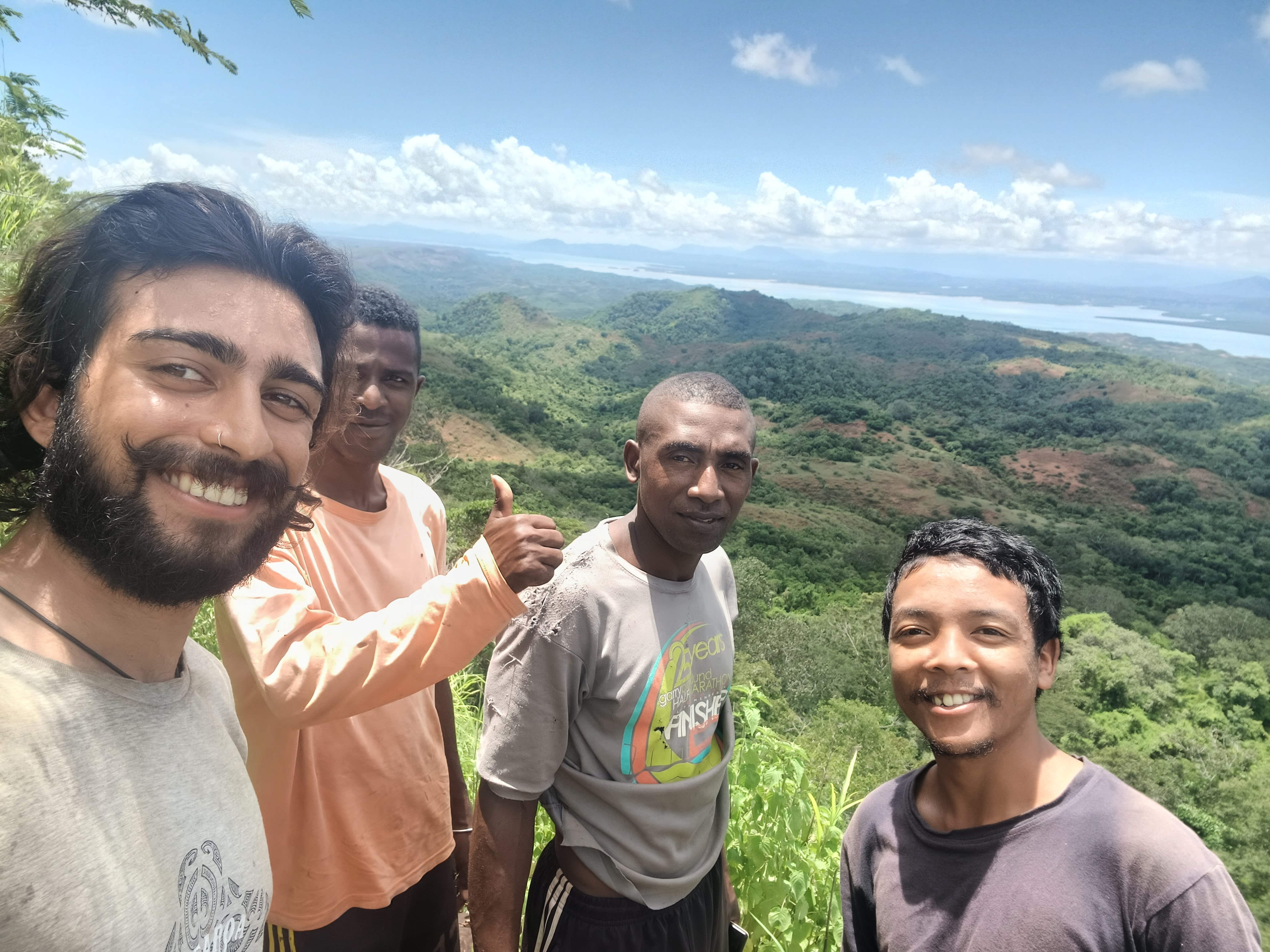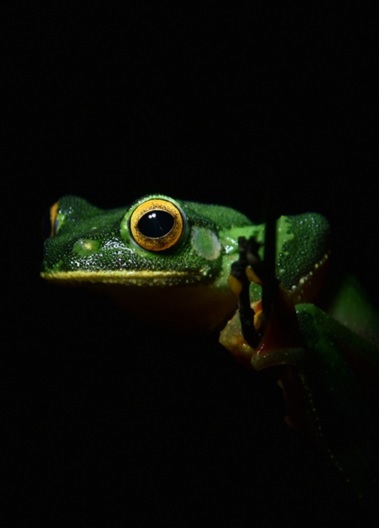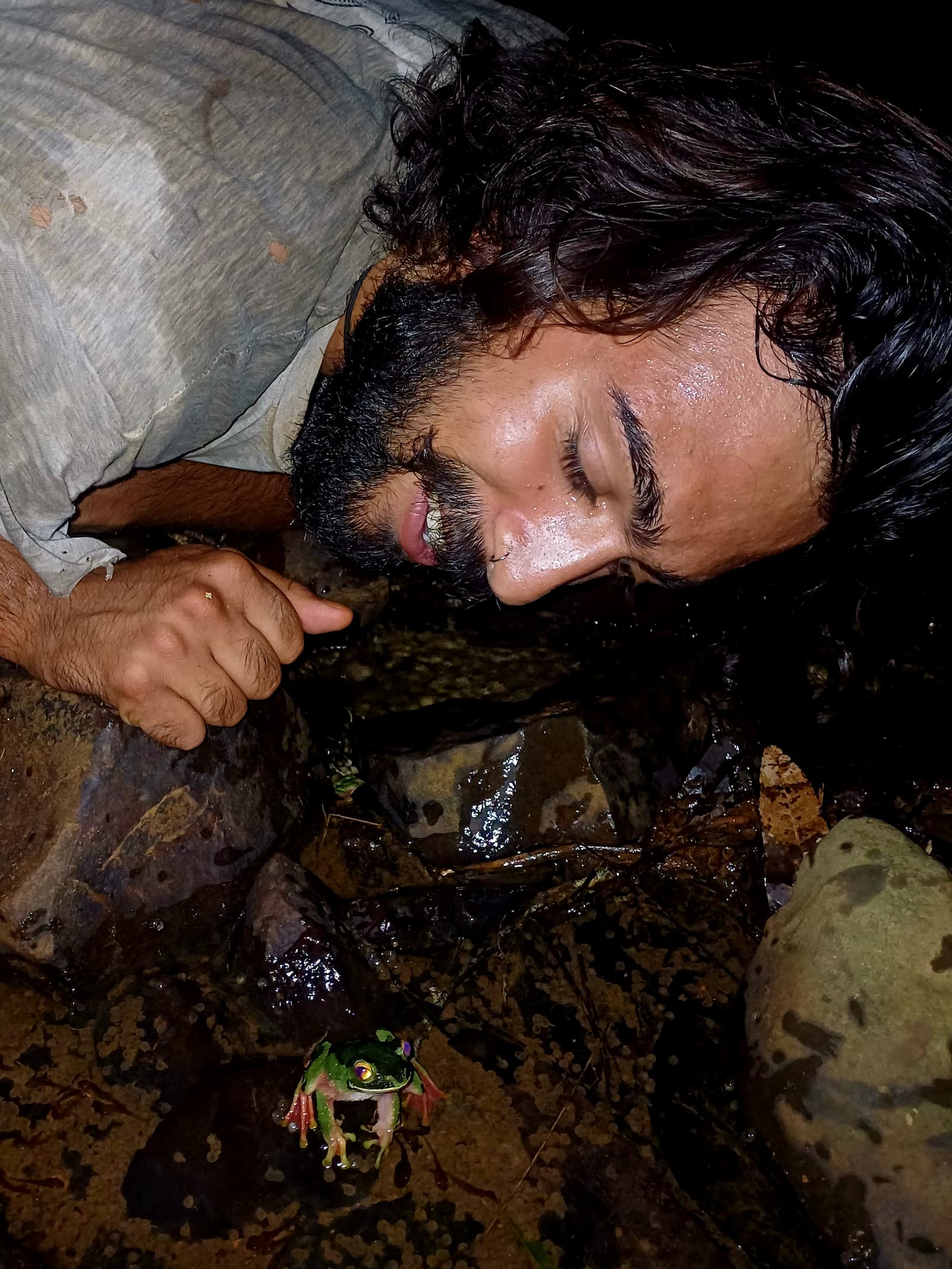
Amphibian surveys in Madagascar
Posted on: 30 July, 2025
Bristol Zoological Society directs over 20 field conservation projects with over 30 local partner organisations around the world.
One area of particular importance is the Sahamalaza peninsula in Northwest Madagascar, where we collaborate with long-term partner The Lemur Conservation Association (AEECL) to protect the region’s last remaining forest fragments.
Despite its extraordinary biodiversity, Sahamalaza faces growing pressure from surrounding human settlements, and its ecosystems are increasingly fragmented. These forests are home to threatened species such as the Critically Endangered blue-eyed black lemur, as well as an astonishing variety of amphibians, many of which are micro-endemic, found in only a couple of river systems! With the amphibians in an incredibly vulnerable state, we have made it a priority to focus on understanding and preserving them.
At the beginning of this year, MRes student Leo Lasrado travelled to Madagascar to conduct his master’s research on the peninsula’s amphibians. The goal was to use automated recording devices, alongside visual surveys, to gain insights into the populations and distributions of the frog species found within the national park. These were to be the first amphibian surveys conducted in the region in over a decade, and it is hoped that the findings shall serve as a new baseline for future research and conservation action.
With months spent preparing and familiarising himself with the local frogs, Leo headed into the depths of the Malagasy wilderness and has shared his experience with us.
Upon arrival, I met the fantastic team at AEECL and my Malagasy counterpart student, Tanjona, who would be assisting me with my research and would prove an absolute pillar of support. Not only did he assist in research matters, but he was also a great help in navigating the local language and culture, allowing me to integrate myself over time. All foreign researchers are required to partner with a local student – a brilliant initiative that fosters knowledge exchange and supports local capacity.
From the capital, Antananarivo, we set off on a mere 14-hour drive across some of the bumpiest roads I have ever experienced to Antsohihy. This was followed by a 4-hour boat ride to Marovato, which was our only way there as the road access is limited during the wet season. After a quick meal of fish and rice, we hiked for another three-odd hours to Ankarafa, the first of the forest fragments we would be surveying.
 We were welcomed at the Ankarafa field station by our local guides and cooks, all of whom proved to be both excellent company and incredibly helpful. Our days were spent relocating recording devices across different areas of interest – sometimes hiking up to seven hours – followed by nighttime amphibian surveys. On our off days, we would pass the time by playing dominos, reading, or simply enjoying the wealth of wildlife that we shared the forest with. Occasionally, we would forage for mangos, chillies, citrus, or cassava to supplement our exciting diet of rice and some beans.
We were welcomed at the Ankarafa field station by our local guides and cooks, all of whom proved to be both excellent company and incredibly helpful. Our days were spent relocating recording devices across different areas of interest – sometimes hiking up to seven hours – followed by nighttime amphibian surveys. On our off days, we would pass the time by playing dominos, reading, or simply enjoying the wealth of wildlife that we shared the forest with. Occasionally, we would forage for mangos, chillies, citrus, or cassava to supplement our exciting diet of rice and some beans.
Every couple of weeks, we would leave the comfort of our wonderful campsite in Ankarafa to make the nine-hour trek to Anabohazo, the second of the fragments we were researching. Despite the more basic facilities, I found this forest more impressive. With more dramatic relief, the views on offer were breathtaking, which was the result of far more difficult hiking. During the onset of rain, the soil would take a soap-like consistency, creating challenging yet fun field work conditions that were essential to align my trip with as they maximise our chances of finding amphibians in the wet season.
 This movement between the two forest sites went on for two months, with the acoustic and visual surveys occurring throughout. In total, we recorded 21 amphibian species throughout the peninsula, with each forest home to its own unique assemblage. The Critically Endangered Ankarafa skeleton frog, Boophis ankarafensis, was visually confirmed only in the same river systems where it was originally discovered. Although fewer individuals were found than expected, I hold hope that acoustic analysis may reveal additional populations around the park. As one of the Bristol Zoological Society’s Reverse the Red pledge priority species, the micro-endemic frog remains a conservation focal point.
This movement between the two forest sites went on for two months, with the acoustic and visual surveys occurring throughout. In total, we recorded 21 amphibian species throughout the peninsula, with each forest home to its own unique assemblage. The Critically Endangered Ankarafa skeleton frog, Boophis ankarafensis, was visually confirmed only in the same river systems where it was originally discovered. Although fewer individuals were found than expected, I hold hope that acoustic analysis may reveal additional populations around the park. As one of the Bristol Zoological Society’s Reverse the Red pledge priority species, the micro-endemic frog remains a conservation focal point.
In Anabohazo, we found large numbers of Boophis tsilomaro, another micro-endemic and Critically Endangered tree frog. During the peak of the wet season, we were lucky enough to witness their explosive breeding events – a chorus of hundreds of frogs gathering in small streams. One of the most unforgettable wildlife moments of my life.
 Boophis tsilomaro, Critically Endangered tree frog
Boophis tsilomaro, Critically Endangered tree frog
Even more excitingly, we identified two frog species that we believe are not yet formally known to science, based on their distinct morphological characteristics. These discoveries serve as a wonderful reminder that these forests still hold many secrets, and these must be protected at all costs.
 Boophis tsilomaro, Critically Endangered tree frog
Boophis tsilomaro, Critically Endangered tree frog
For now, the hundreds of hours of audio data are being analysed. I’m excited to see what insights they’ll bring, perhaps evidence of greater species richness, or confirmation that some threatened frogs are far more widespread than we previously thought. I truly hope this work can lay the foundation for more consistent amphibian monitoring across the region and go on to contribute to more effective conservation efforts in years to come. By identifying where species occur, when they breed, and what habitats they live in, this research will support targeted, evidence-based interventions to protect amphibians in Sahamalaza.
This blog was authored by Leo Lasrado, MSc Global Wildlife Health and Conservation student, University of Bristol.
The Ankarafa skeleton frog is kindly sponsored by Green Frog Connect.

Find out more information about our different conservation projects in Madagascar below.

Want to help us save wildlife?
Become a member today for a year of wild adventure, and help protect the animals and habitats you love by supporting our conservation charity.

